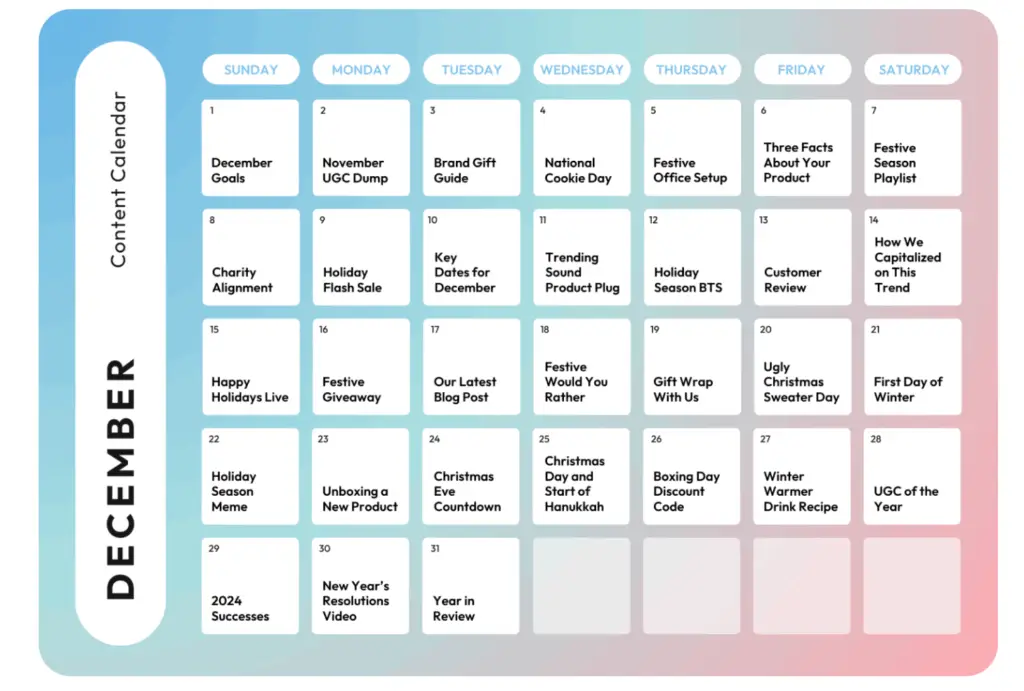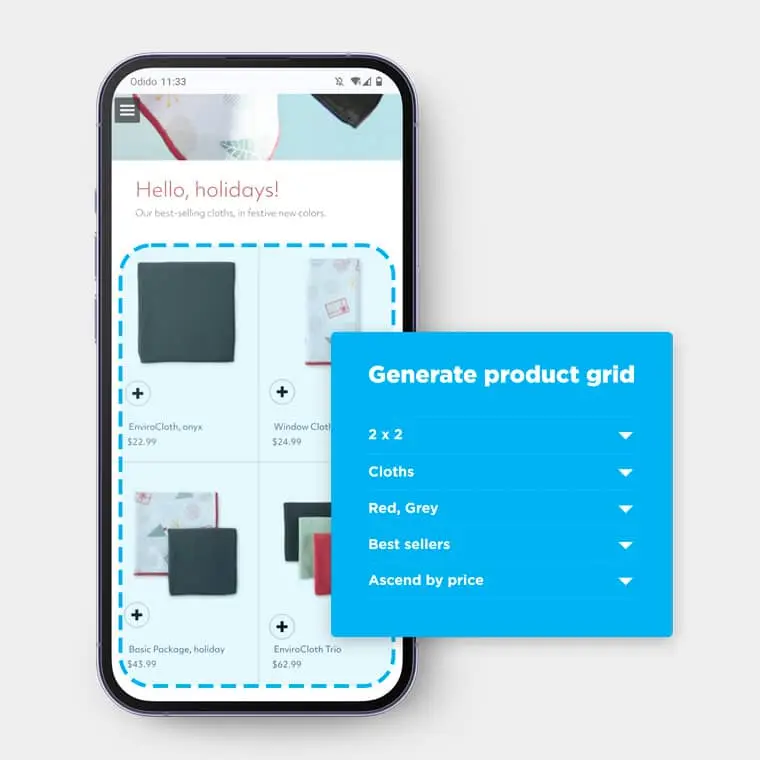This holiday season guide is designed to help you make the most of one of the biggest retail windows of the year. From Black Friday and Sinterklaas to Christmas and New Year, shoppers are ready to spend, and your digital catalog needs to be in top shape to capture their attention and convert interest into action.
Last year, global holiday sales reached $1.2 trillion, proving how powerful the November to January window can be. But with growing competition and increasingly limited attention spans, simply uploading your usual catalog will no longer deliver results. A clear, well-timed strategy is essential to stand out and maximize this high-conversion period.
This holiday season guide outlines seven practical ways to optimise your digital catalog for better performance, stronger engagement, and improved revenue outcomes.
1. Choose Your Holidays Strategically
Not every holiday deserves the same level of attention. The key is to focus on those that align with your target markets and product offerings.
Start by reviewing your customers’ locations and which holidays they care about most. For example, Black Friday and Christmas may be top priorities in the US and UK, while Sinterklaas is a key retail moment in the Netherlands. Singles Day is popular in Asia, and Boxing Day is an opportunity for clearance sales in South Africa or Australia.
Here are the main options between now and January:
- Halloween
- Thanksgiving
- Black Friday
- Sinterklaas
- Christmas Day
- Boxing Day
Align your internal teams early. Build a shared campaign calendar across marketing, product, and design. Determine when each campaign needs to go live, and work backward to plan content, visuals, and stock requirements.
Example: A Dutch retailer might launch a Sinterklaas-themed catalog on November 15 featuring family-friendly toys and games, followed by a more deal-focused Black Friday version promoting electronics and limited-time offers.
2. Plan a Visual Refresh
Your catalog’s first impression matters. Holiday-specific design elements can make your catalog feel more relevant and timely.
Plan seasonal hero banners, collection covers, and product imagery that reflect each holiday’s visual tone. Black Friday might call for high-contrast and minimalist styling. Sinterklaas can be more traditional and playful. A Christmas design might feel warm, cosy, and gift-focused.
If you’re tight on time or budget, consider using generative AI tools like Midjourney, Runway, or Adobe Firefly. These can help you quickly create holiday scenes, change backgrounds, and test different visuals without relying solely on traditional design resources.
Example: A fashion retailer uses generative AI to create snowy backdrops for winter jackets, then switches to gold and black graphics for a New Year’s Eve collection, all without needing a new photo shoot.

3. Let Data Guide Your Product Focus
Use historical data to determine which products deserve the spotlight during peak season. Look at last year’s performance across product views, sales, and engagement. Identify your top sellers, most gifted items, and high-margin products.
From there, map products to holiday themes. Group them into categories like gift guides, limited editions, or seasonal bundles that make browsing and buying easier.
Example: A skincare brand sees that its mini gift sets performed well in December. They promote those products as “perfect stocking fillers” across a dedicated holiday collection this year.
4. Build a Social Content Calendar
Your catalog and social media presence should complement each other. Shoppers often discover products through Instagram, TikTok, or Facebook before clicking through to browse or purchase.
Plan your content calendar around your holiday campaigns. Include teaser videos, countdown reminders, product spotlights, and links that drive traffic back to relevant catalog sections. Use templates to maintain consistency and make production easier for your team.
Example: A home décor retailer runs a series of Instagram stories showing different room setups using items from its holiday catalog. Each story links directly to a shoppable section.

5. Use Automation to Scale Efficiently
Updating product details, pricing, or availability during the holiday season can be time-consuming and error-prone. Automation can help you stay agile and responsive.
Check whether your catalog platform supports product feed syncing, dynamic stock updates, or rule-based tagging. These features allow your catalog to reflect the latest changes in pricing or availability without manual updates.
Example: A tech retailer syncs its catalog with live stock and pricing from its e-commerce backend. As Black Friday discounts go live, the catalog reflects these changes in real time.

6. Improve Layout and Usability
A well-structured catalog encourages longer browsing and better conversion. Organise your products clearly and make it easy for users to find what they need.
Use smart product groupings, clear call-to-action buttons, and intuitive navigation. Reduce clutter and ensure consistent styling so the experience feels easy and fluid, especially for first-time visitors.
Example: An electronics store creates a simplified layout with categories like “For Gamers,” “Smart Home,” and “Gifts Under R500” at the top of the catalog. Each category links to a dedicated section with curated product listings.
7. Optimise for Mobile
Most holiday shoppers browse and buy on mobile. Your catalog needs to perform well on smaller screens with slower connections and touch-based navigation.
Design with mobile in mind. Use larger buttons, reduce page load times, and keep layouts clean and scrollable. Avoid hover interactions and preview everything on real devices before launch.
Example: A toy brand redesigns its digital catalog for mobile, using swipe-friendly sections, large tap targets, and a fixed “Find a Gift” button at the bottom of the screen.
Maximise Every Moment of the Holiday Season
Preparing your catalog for the holiday season takes more than a few new images. It requires intentional planning, design consistency, and a clear understanding of customer behaviour.
This holiday season guide gives you the foundation to optimise your digital catalog for higher visibility, engagement, and conversion. Start early, use data and automation wisely, and consider AI-powered design tools to help you scale quickly without sacrificing quality.
If you’re ready to elevate your holiday catalog, consider starting with a free trial or speaking to your platform team about what’s possible. The earlier you prepare, the better your results.


